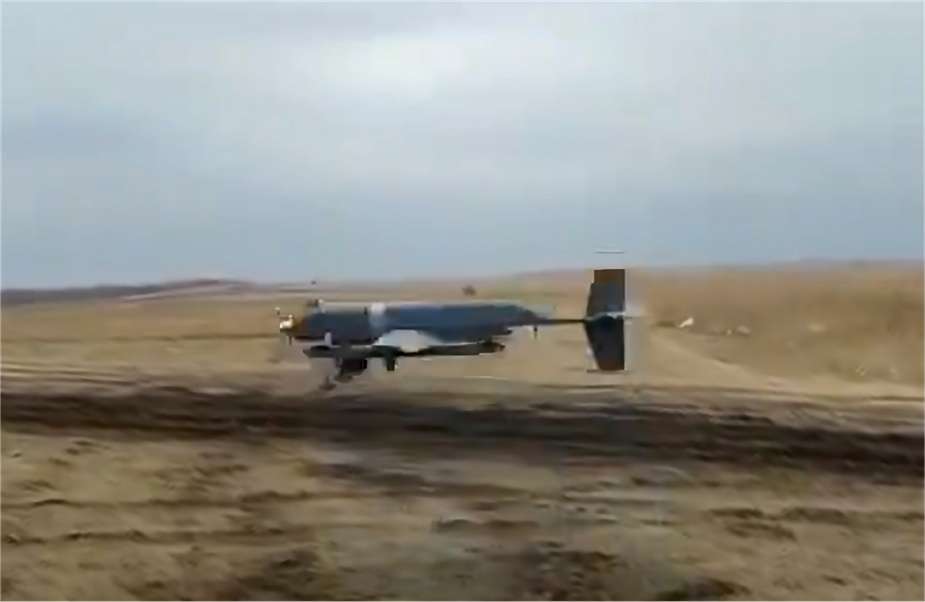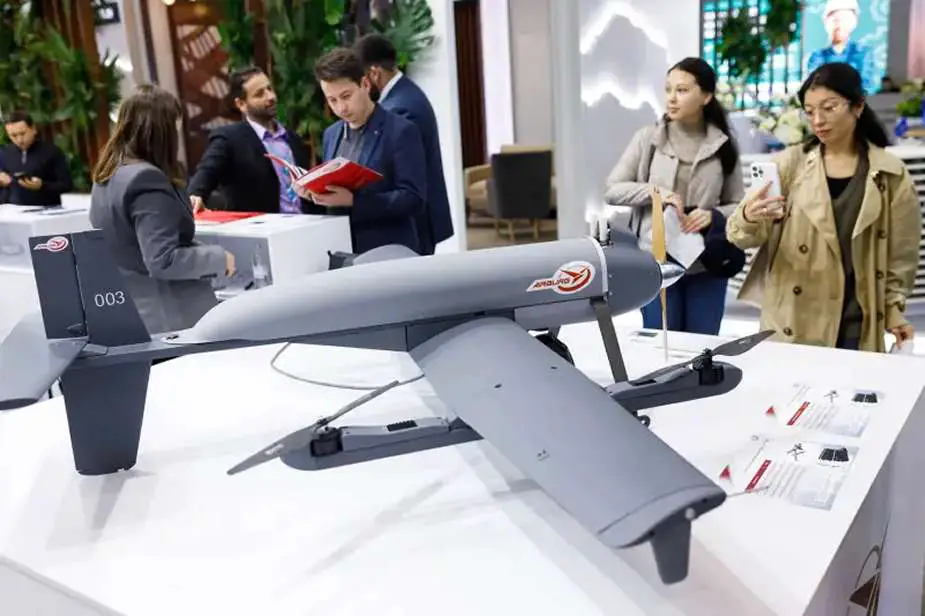A video released on the 'Russian Engineer' telegram channel on March 21, 2024, reveals that Russian military forces have deployed in Ukraine a new drone technology: the deployment of the 'Pchelka' (Bee) FPV drone carrier. This announcement follows Ukrainian forces' awareness of drones, marking a significant advancement in the tactical application of unmanned aerial vehicles (UAVs) in the Russian-Ukrainian conflict.
Follow Army Recognition on Google News at this link

The new Russian-made Pchelka is capable of carrying an FPV (First Person View) drone, extending its range. (Source: Telegram video footage)
Designed to carry and deploy up to seven First Person View (FPV) UAVs directly over enemy positions, the Pchelka significantly enhances Russian capabilities in aerial surveillance and combat operations.
FPV (First Person View) drones have emerged as one of the predominant weapons in the conflict zone in Ukraine. These drones are widely utilized for a variety of purposes, showcasing remarkable effectiveness. It is believed that several of the adversary's armored vehicles and positions have been compromised by attack UAVs leveraging the innovative "Bee" product.
The Russian innovation, dubbed "Pchelka," is a VTOL (Vertical Take-Off and Landing) craft powered by gas. It is designed to transport an FPV drone beneath its structure. The ability to launch and recover in diverse environments offers significant tactical flexibility. Remarkably, the Pchelka can fly to the limits of its operational range to deploy FPV drones, which then exploit their maximum range capabilities, often extending several kilometers.
Reportedly first revealed at a defense exhibition in Russia last year by Pchelka UAV from Airburg JSC in Ekaterinburg, the drone, known as "Bee," is aimed at enhancing optical reconnaissance and serving as a carrier for smaller drones.
The "Bee" is a tiltrotor, capable of both vertical and horizontal flight, thanks to a unique design that combines various takeoff and landing modes. It features a streamlined fuselage with a stabilizer and fin, and a low-set straight wing supported by beams housing propeller groups.
While specific dimensions and weight of the "Bee" remain undisclosed, estimates suggest a length of 1.2-1.5 meters and a comparable wingspan, with a payload capacity of around 3 kg and a significantly higher maximum takeoff weight.
The drone incorporates a compact internal combustion engine in the front for horizontal propulsion, while a quartet of propeller groups powered by electric motors facilitates lift. The coordination between these propulsion systems, whether integrated or independent, operating off fuel or battery power respectively, is not detailed.
"Bee" achieves vertical takeoffs and landings, transitioning to airplane-like flight. While its speed is not specified, it boasts a range of up to 300 km and operational altitudes ranging from 50 to 2500 meters. Equipped with a remote control and two-way communication, it carries a compact spherical optical-electronic system (OES) for reconnaissance, capable of day and/or night operation.
Further enhancing its capabilities, the Bee UAV can transport smaller drones. Although the method of attachment and the exact capacity for external carriage remain unclear, it's noted that in conjunction with kamikaze drones, a large UAV could also relay radio signals, significantly extending the operational reach of the attack drones.

The 'Bee' FPV (First Person View) drone carrier was unveiled last year during a defense exhibition in Russia. (Picture source: Top War)
News Russia Ukraine War















